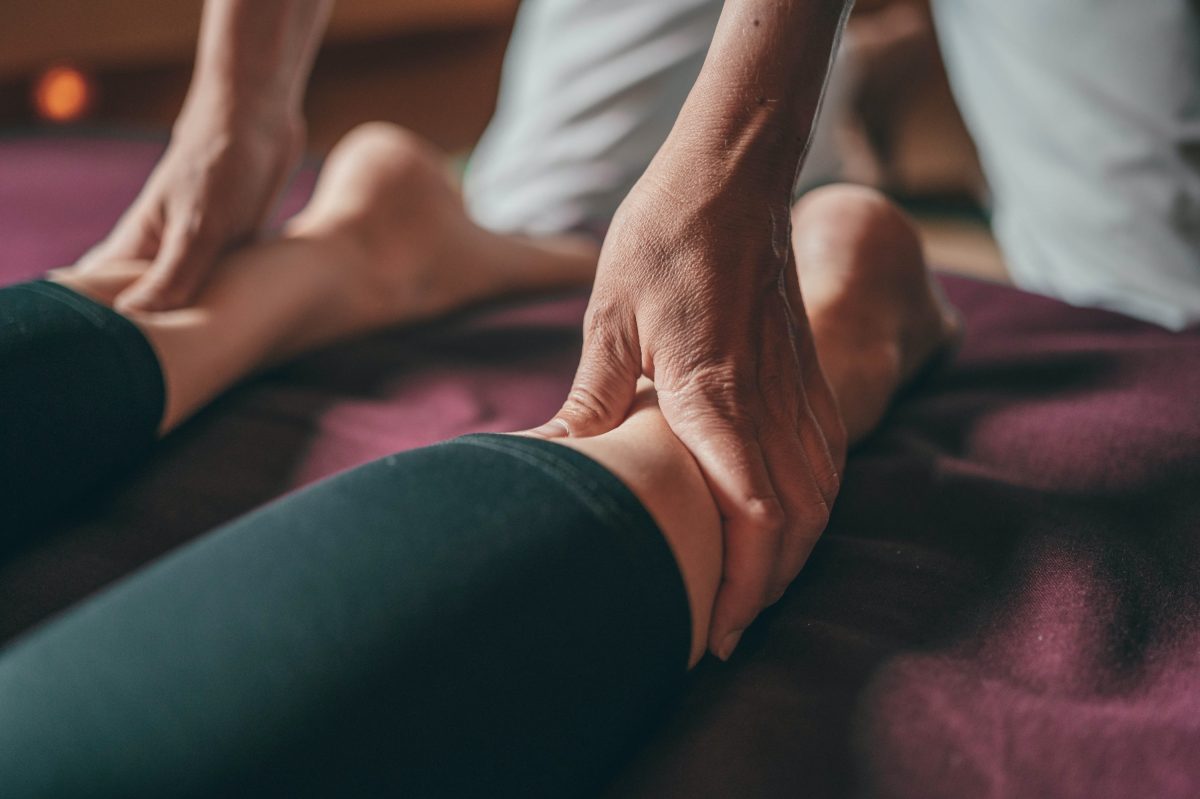A sports massage can give the athlete a boost before a competition or help them recover afterwards. Used regularly, it enhances performance.
Why are sports massages beneficial?
Repeating the same movements over and over again can cause the relevant muscles to shorten and become overloaded. Inflammation and wear and tear often occur when the tendon “rubs” over a bone again and again. To prevent this from happening, you should take care of your muscles regularly. Sports massage adapts to the goal of the athlete very individually, depending on the goal of the individual athlete.
When is a sports massage advisable?
Sports massage can be done pre activity, before the competition, as part of the warm-up. You can do it in training, for example during a short hydration break, to loosen up the tense muscles. The third category includes post-activity massage, which is used for regeneration and muscle care.
What effect does massage have before training or competition?
Firstly, it promotes blood circulation. Massage causes the blood vessels to dilate. As a result, more blood, more nutrients and more oxygen reach the muscle and this increases performance. Secondly, it prevents injuries because the muscles become more flexible and supple thanks to the massage. Third, a quick and intense massage activates the sympathetic nervous system, which puts the body in a better state of readiness for competition. And fourth, the masseur or masseuse can give the athlete confidence and help “push” the athlete.
What should you look for in a pre-activity massage?
It should last a maximum of 15 to 20 minutes and should not loosen the muscle tension too much, because otherwise the risk of injury increases. Loosening does not automatically mean lowering muscle tone. Therefore, massage is done quickly. Tapes or bandages can be supportive.
How often should you have a massage?
Once is not enough. If you want to improve your performance, you need a sports massage regularly, i.e. about every two weeks during the competition season. Outside the competition season, an interval of three to four weeks makes sense.
What are the benefits of post-activity massage?
It supports regeneration, helps to remove toxins in the muscles, reduces muscle tension and loosens the muscles. It may also be able to mitigate muscle soreness. Compared to pre-active massage, post-active massage is performed in a rather slow and flowing manner.
What about self massage?
Yes, athletes can actually do a lot themselves: Regular stretching, loosening the fascia with the help of black rolls and also heat applications, such as with sauna sessions or baths, are recommended. Warming massage oils or creams must be massaged in well for an optimal effect.
What else promotes recovery?
An ice bath or a cold shower of arms and legs immediately after sport is good for recovery. Some athletes swear by electrostimulation with a TENS or Compex device for recovery.
When is a massage not a good idea?
In the case of acute injuries or inflammations, a massage on the affected muscle exaggerates the injured area even more. In these cases, it is therefore better to work with cooling compresses or ice.
Do massages help to return to exercise more quickly after an injury?
Sports massage supports the healing process. However, to build up muscles, physiotherapy or well-accompanied rehabilitation training is needed, and massage does not help.
Where does massage reach its limits?
If symptoms do not improve, you should check your movements with your trainer or physiotherapist and, for example, do a gait analysis when running. Incorrect footwear can also lead to stress, which massage can’t help with in the long run. It is always important that the whole team works together.
Medbase is the largest multidisciplinary sports medicine network in Switzerland and offers specialized sports medicine services for athletes, clubs and sports associations of all activity levels in the areas of sports medicine, sports physiotherapy, performance diagnostics and training advice.



